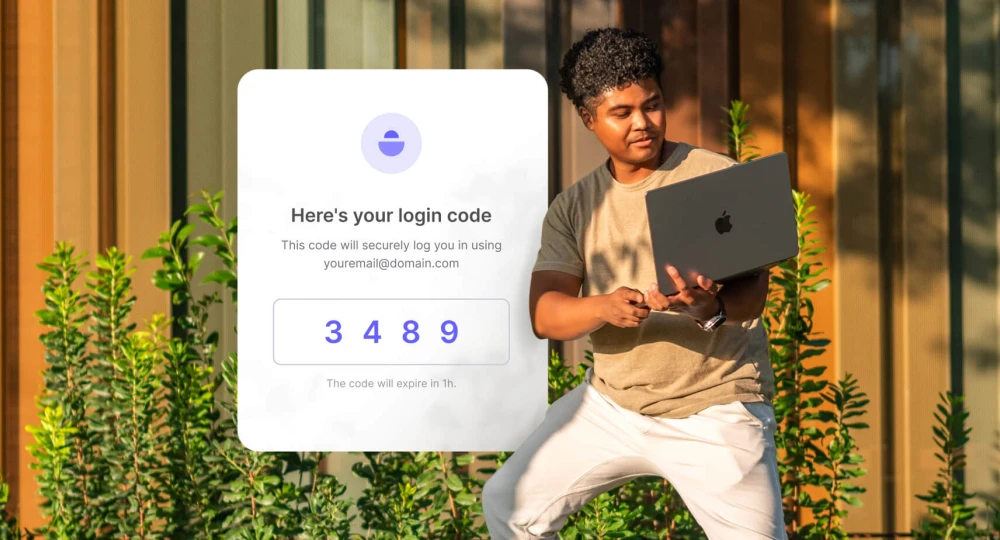What is transactional SMS and how does it improve customer communication?

- What is transactional SMS?
- Transactional SMS use cases and examples
- User authentication
- Bookings and appointments
- Service notifications and alerts
- E-commerce
- Government and other organizations
- Internal communication
- SMS autoresponders
- Benefits of using SMS messaging for your business
- Transactional SMS best practices & compliance
- How to send SMS messages with MailerSend
- Conclusion
Transactional SMS is a convenient and direct communication channel. It lets customers receive your important updates, even if they don’t check their email inbox multiple times a day. Not only does this allow you to reach more people, but it also enables you to improve the customer experience and increase customer engagement.
Stick with us to learn about the benefits of transactional SMS and how all kinds of businesses can use it to boost their customer communication.
What is transactional SMS?
Transactional SMSes are automated messages containing important, time-sensitive information about an account or a transaction. The message automation is triggered by an action carried out by the user, an event that relates to the action, or other account activity.
Examples of transactional SMS include shipping notifications triggered by a recent purchase, or subscription renewal notifications triggered by the automatic renewal of a subscription. Unlike transactional emails, to send transactional messages via SMS, you need opt-in consent from your customers.
Here are three real-world transactional SMS examples from DHL, a bank and OpenTable.

This type of communication is also referred to as A2P (Application-to-Person) messaging, which means the SMS messages are sent from an application or program, rather than from person to person (P2P).
What types of phone numbers can be used for A2P transactional messaging?
A2P messaging supports various types of phone numbers but the one you’ll use will largely depend on the SMS platform or provider you use. These are the most common types of transactional SMS numbers businesses use.
Toll-free: Toll-free numbers contain distinct 3-digit codes (800, 888, 87, 866, 855, 844 or 833) and are dialed via landline at no cost to the consumer. If they are text-enabled, businesses can use them to enable 2-way communication via SMS. These numbers have a high message throughput and are generally more cost-effective than other numbers. This is the type of phone number you’ll get if you sign up with MailerSend and purchase a phone number to start sending SMS messages.
10DLC: 10DLC numbers are 10-digit phone numbers designed for A2P messaging. They are similar to toll-free numbers as they comply with industry standards (and are vetted by carriers) and offer a high message throughput. However, they tend to be more costly than toll-free numbers.
Short codes: Short code numbers are more often used for marketing campaigns or interactive communication, as they are easier to remember due to their 4, 5, or 6-digit length. They offer a high throughput, however, while they allow for messages to be received, they don’t allow for 2-way messaging conversations. They also take longer to be approved and are generally more pricey.
Long codes: Long codes are regular phone numbers (10 digits) used by businesses. They allow for 2-way messaging conversations and are often used for support. Unlike 10DLC phone numbers, long codes don’t go through a registration and vetting process, which makes them more easily accessible. The downside is that they have a lower throughput as a result.
Alphanumeric sender IDs: Sender IDs are strings used to identify message senders in countries where short and long codes are not available.
The difference between promotional SMS campaigns and transactional SMS
While transactional SMS messages contain important information relating to a customer's action, promotional SMS messages are sent for marketing and advertising purposes in order to promote your offers, products or services.
A promotional SMS subscriber may not be a customer, and a customer may not be a promotional SMS subscriber. But the goal of SMS marketing is to turn subscribers into customers, while the goal of transactional SMS is to strengthen customer relationships and enhance the customer experience.
Transactional SMS use cases and examples
There are many types of SMS that cover every step of the customer journey. They fit so well into the customer experience that you probably receive transactional SMS all the time without even realizing it. Let’s take a look at some of the most popular examples of transactional SMS—feel free to use them for your own business SMS!
User authentication
One-Time Passwords (OTPs)
An OTP text message is a popular type of transactional SMS that helps to make websites, apps, and customer accounts more secure. According to the ITRC Annual Data Breach Report, as of 2024, someone falls victim to a cyber attack every 11 seconds. That’s quite a scary statistic for businesses, especially since phishing attacks cost them $4.88 million on average (IBM).
So with online security becoming more and more of a priority for businesses and consumers, many websites and apps are opting to use OTPs. SMS is the ideal way to deliver OTPs, as they can be delivered instantly and without the need for the user to visit their email inbox.
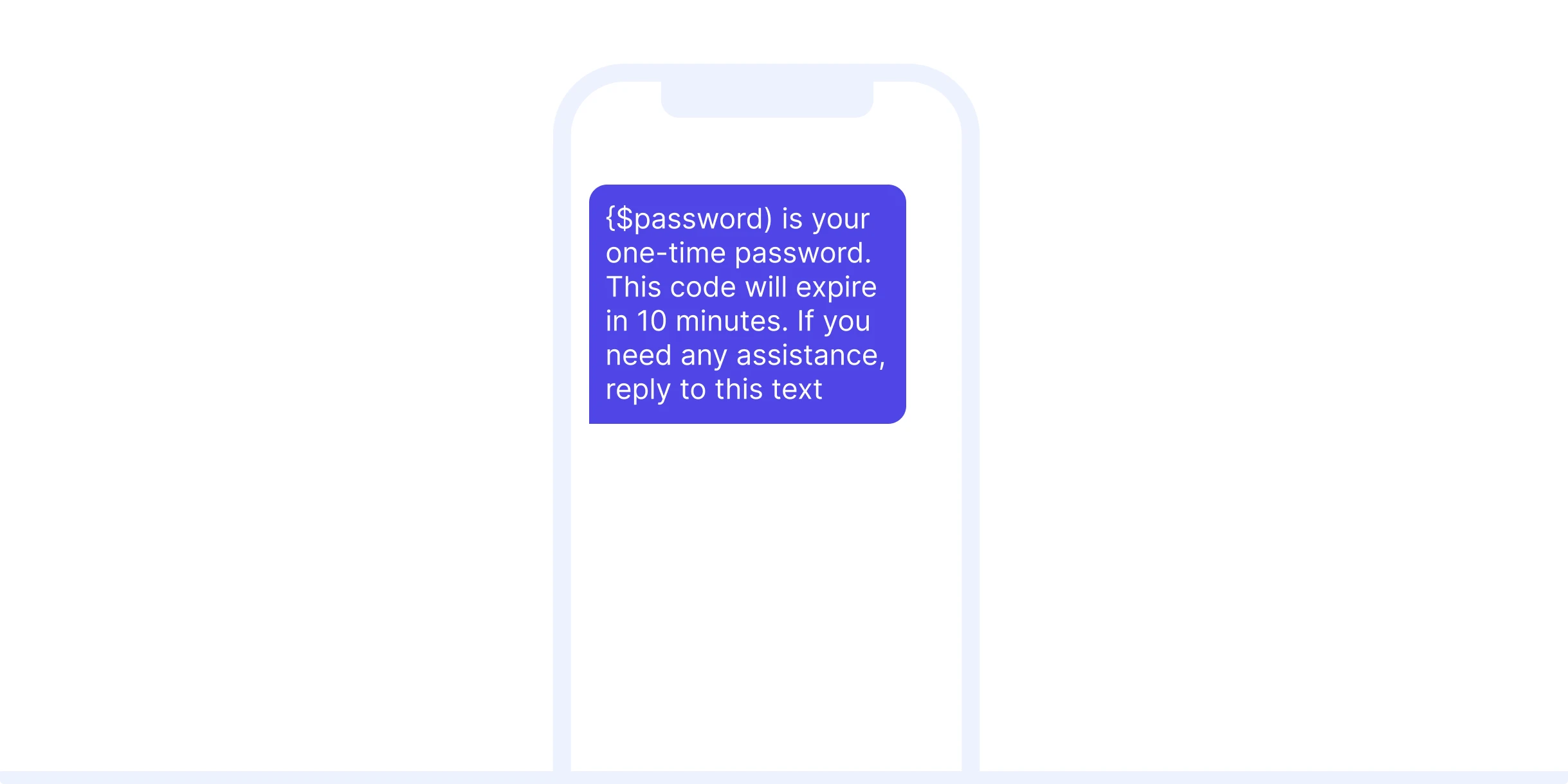
Two-factor authentication (2FA)
Similarly, two-factor authentication allows you to add another layer of security to the users’ signing-in process by sending an authentication code to a verified email address or phone number.
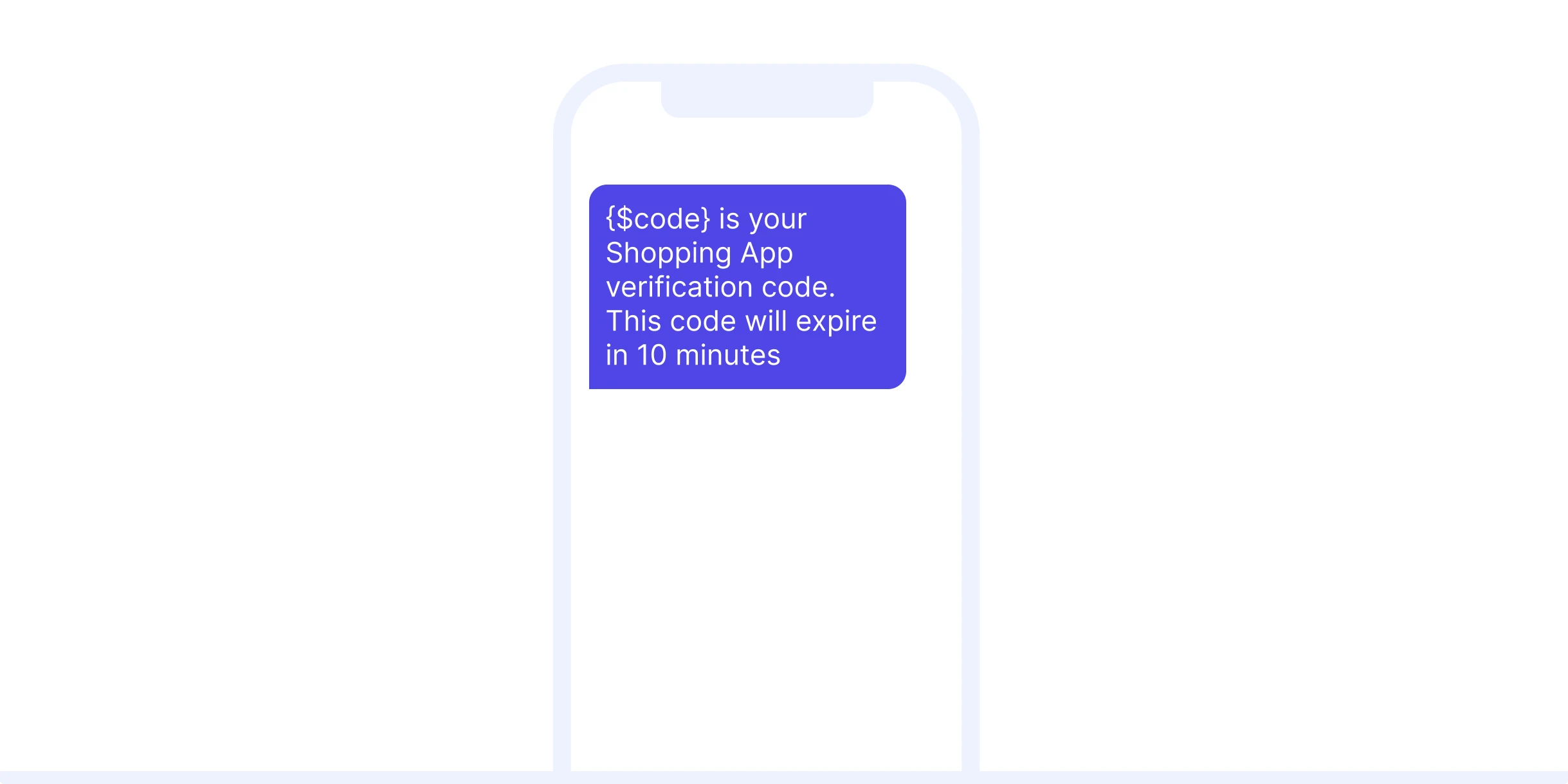
Bookings and appointments
Reservation confirmation and cancellation
Whenever a customer makes a booking or reservation, a confirmation message is needed in order to build trust and ease any anxiety about whether the action was completed. The same goes for when the booking or reservation is canceled. What’s more, if they need to access information regarding their booking, they can do so easily from their text message inbox.
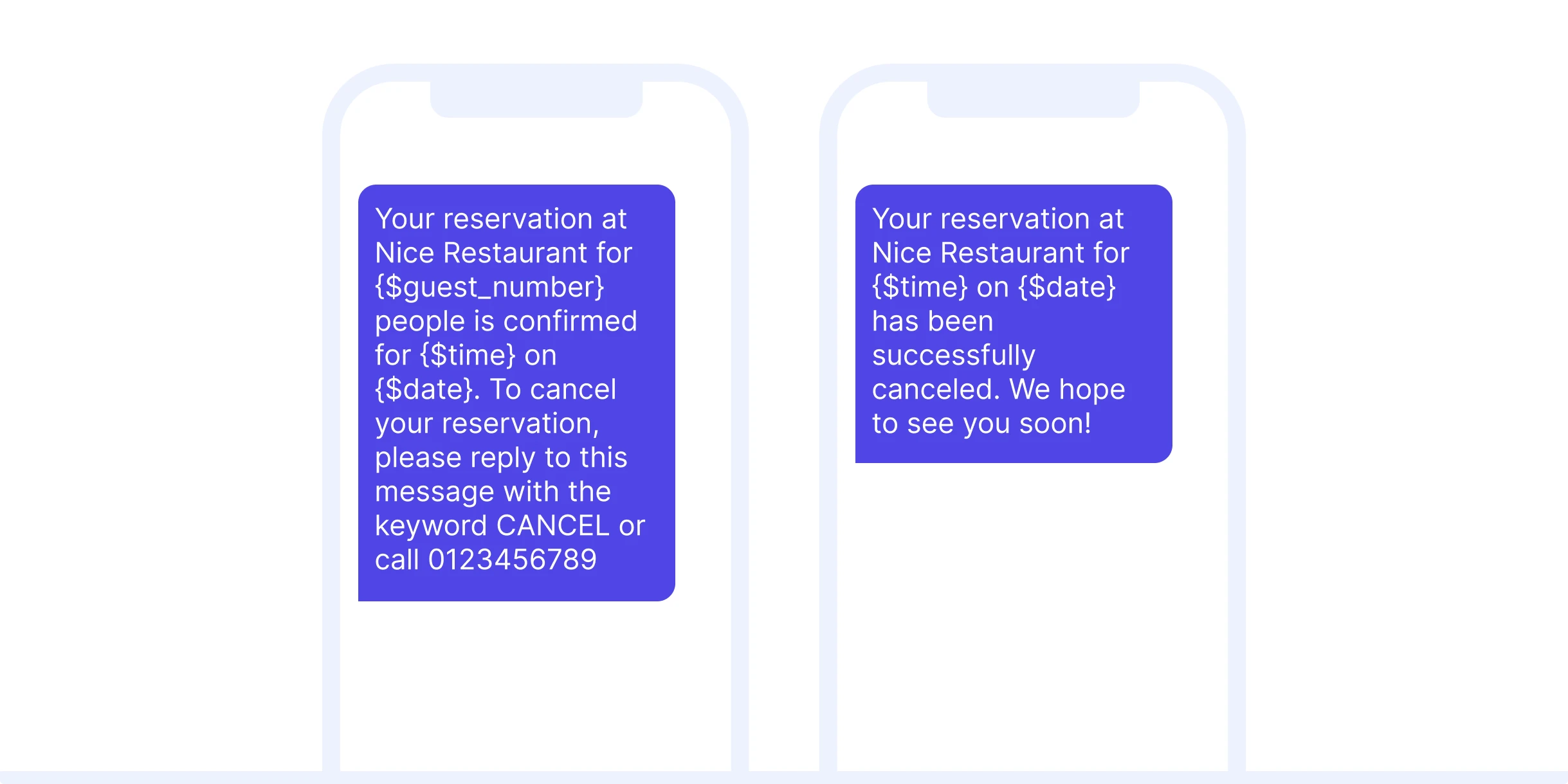
Appointment confirmation and reminders
Not only are appointment reminders useful for customers, but they also help make your business more efficient. By sending automated messages to remind customers about upcoming appointments, you can avoid lateness and no-shows, which could potentially save your business money and time.

Service notifications and alerts
Payment and billing alerts
Staying on top of every outgoing payment can be a hassle. With payment and billing alerts for banks and financial services sent via transactional SMS, your customers can know exactly when their account or credit card has been charged, or be informed if the payment has failed and take action as soon as possible.
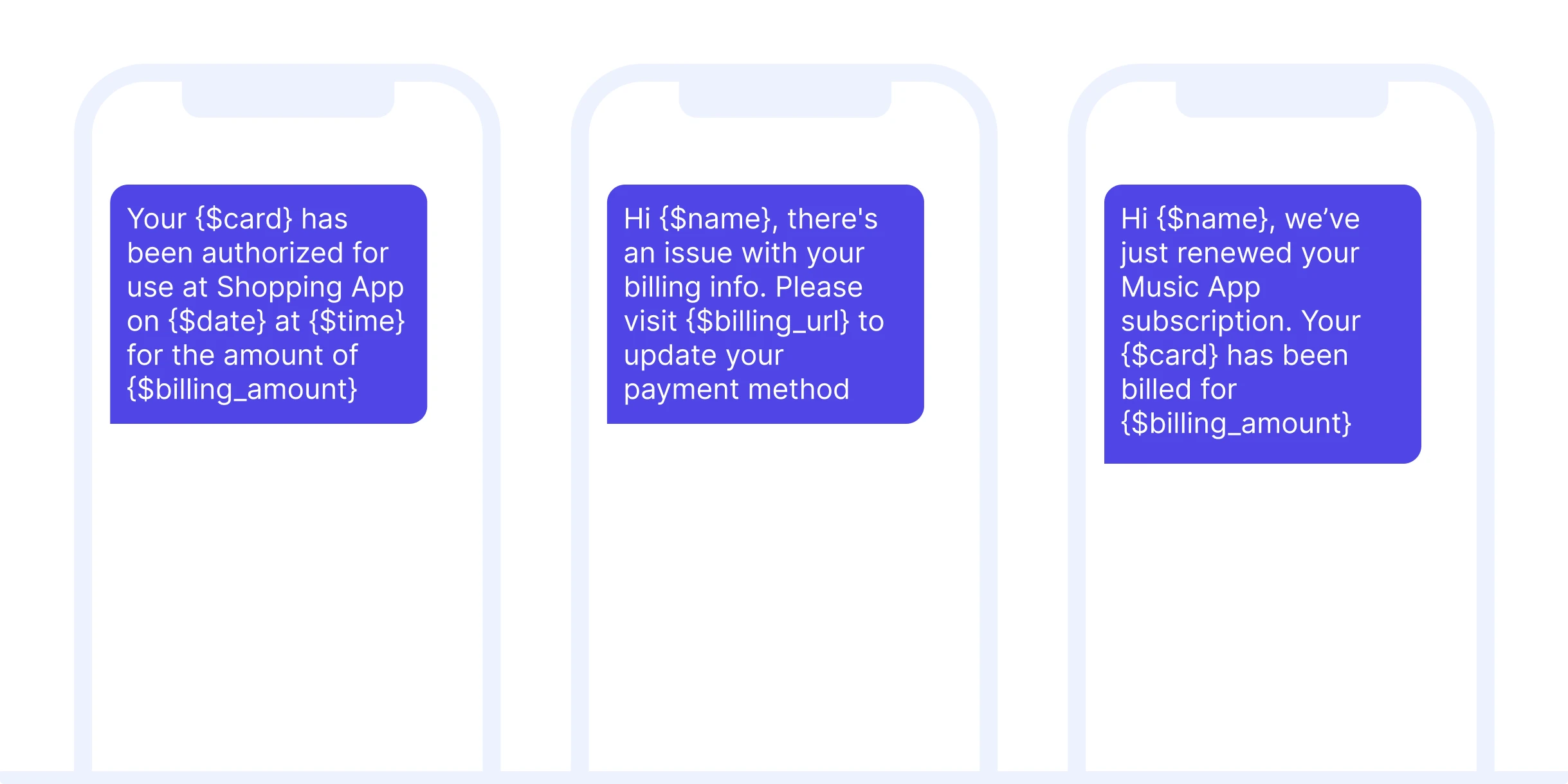
Service updates
Updates to your service can be critical to the user experience. When you need to inform customers reliably and as soon as possible, an SMS message is the ideal solution. This could be for anything from service outages and important updates to the user’s account requiring attention and potential security breaches.
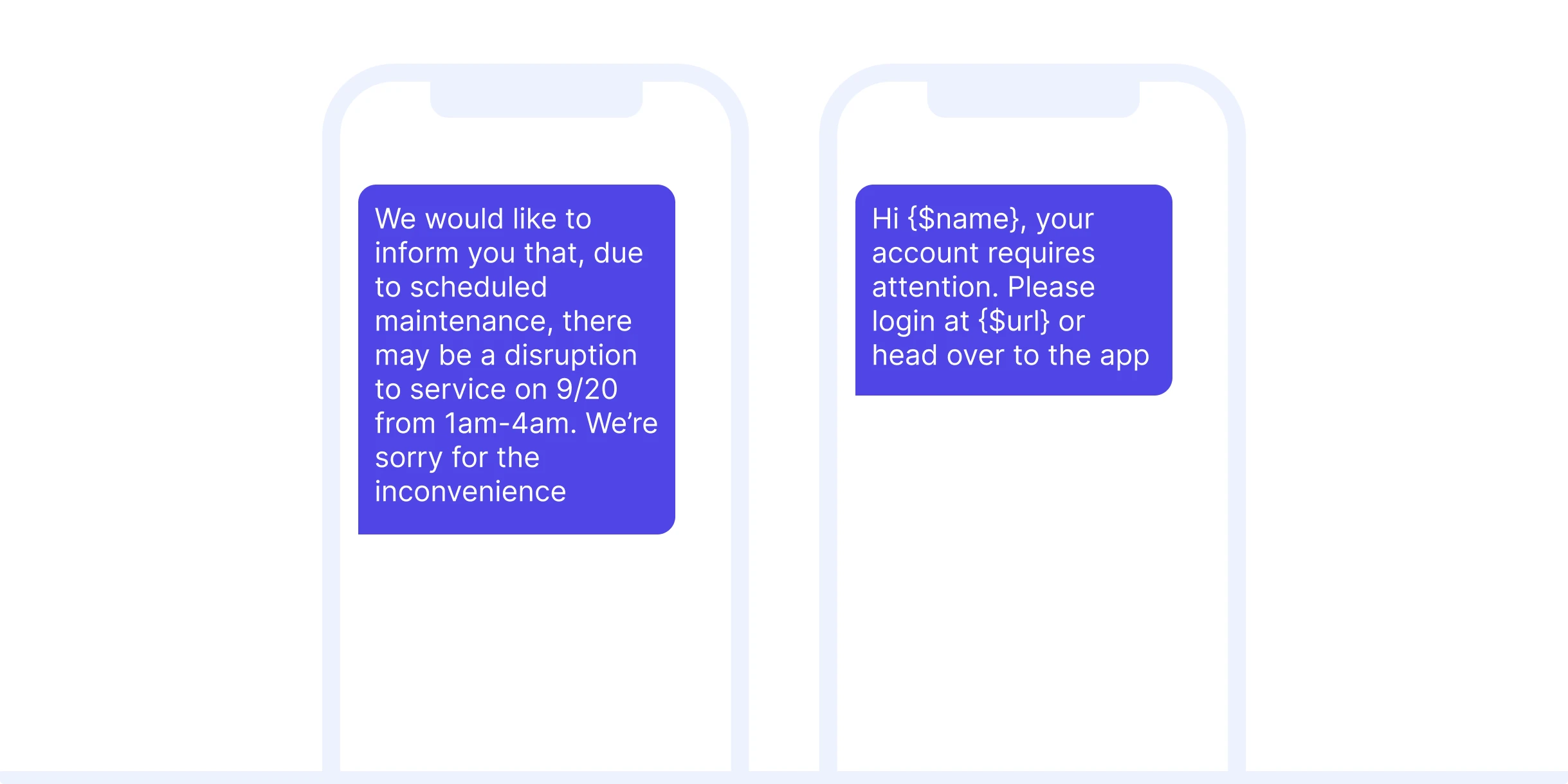
Welcome messages
Welcome messages are a great way to start off your SMS journey with a new customer or user. This is your chance to say thanks and let them know important information about their account when they sign up with you online or in-store. You can also let them know that they can opt out of receiving SMS at any time.
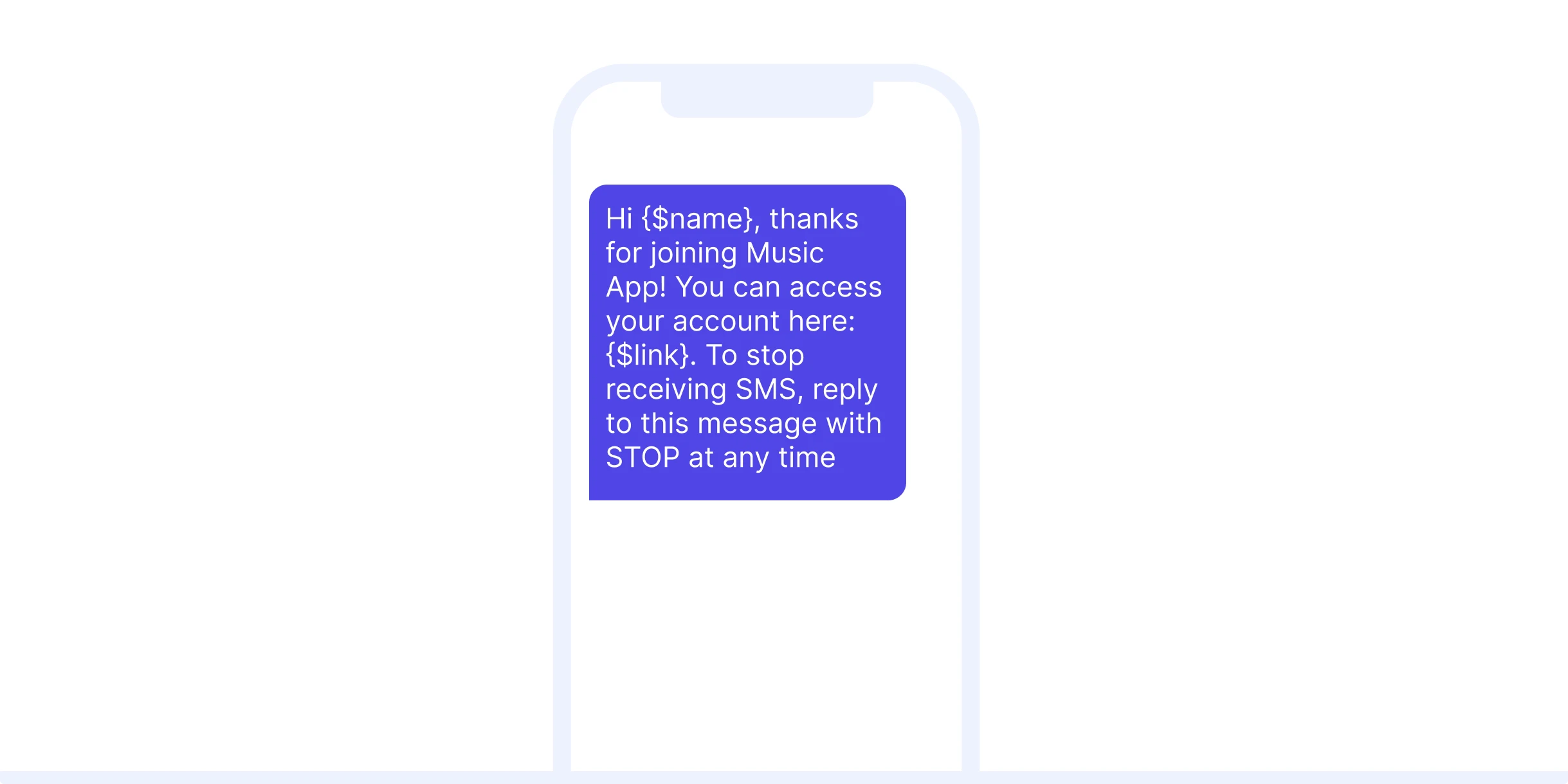
Support ticket confirmations
Contacting customer support and waiting for an answer is not the most fun experience, but you can ease the pain for customers by providing them with confirmations and updates about their support tickets.

E-commerce
If you run an e-commerce business, you’ll know transactional messaging is a big deal. With e-commerce SMS, you can make the customer experience even more seamless.
Receipts
Your customers may opt for receipts to be delivered via SMS whether they are shopping online or in-store. For in-store purchases in particular, many consumers and businesses are showing a preference for digital SMS receipts in an effort to cut down on waste and be more environmentally friendly.
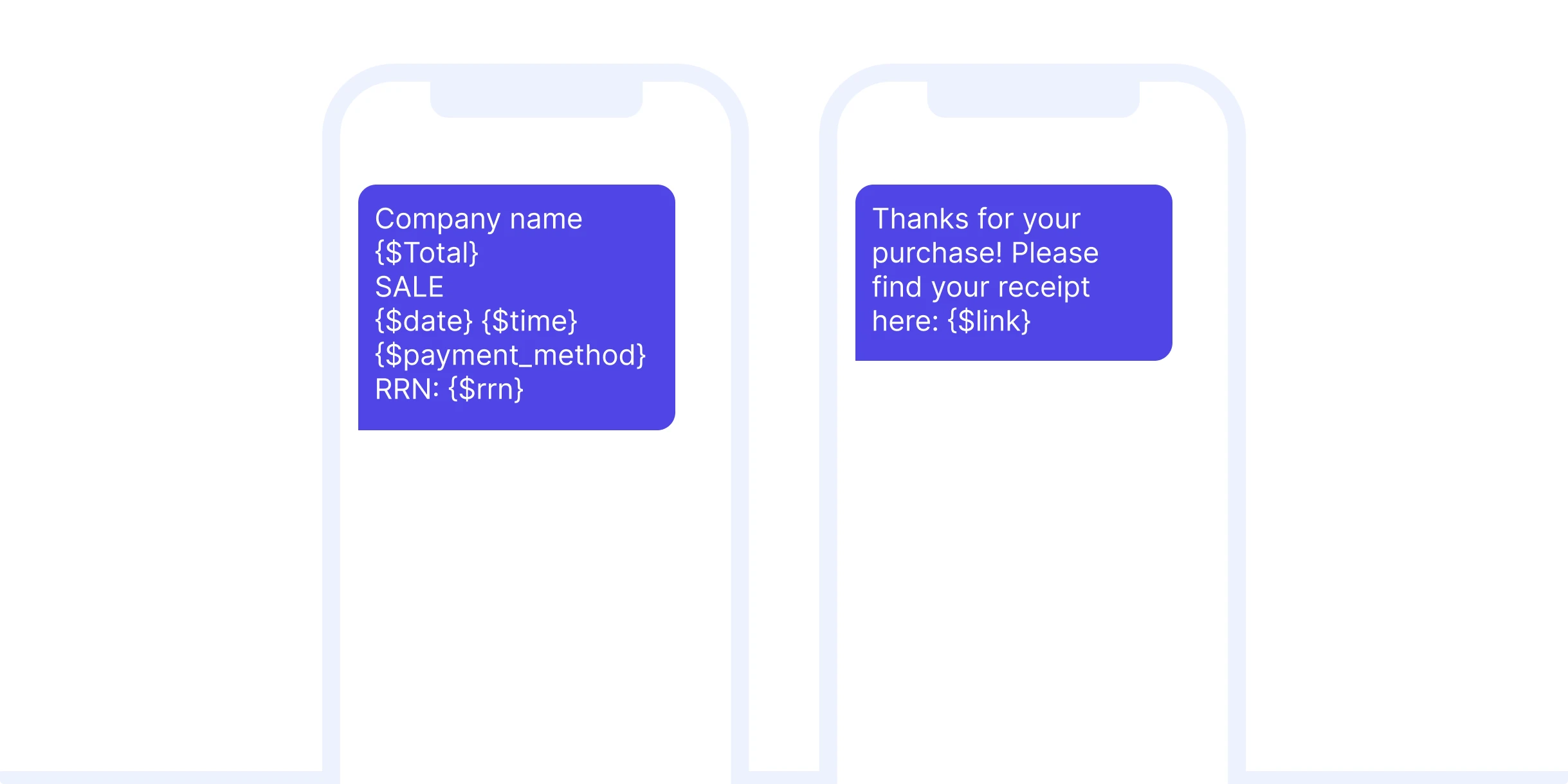
Order confirmation and status updates
A lack of communication between placing an order and receiving delivery of it can be a cause of anxiety for customers, leaving them wondering if they can trust the company from which they made a purchase. Order confirmation messages are a must—even better if you can give order status updates along the way.

Shipping and delivery updates
All customers enjoy the reassurance of knowing where their orders are in the shipping process and when they’ll be delivered. Shipping updates and delivery notifications are especially useful for people who are often not at their delivery location during the day so that they can arrange to be around or change the delivery time.

Abandoned cart reminder
Customers abandon their purchase before checking out a lot—and they do it for many reasons. Abandoned cart reminders are effective in giving them a little push in the right direction, and with the high open rates of transactional SMS, sending them via text message is a great way to get more sales. You can even throw in an incentive like a discount code or free shipping.

Product alerts
If you have a super in-demand, often out-of-stock product, or are waiting for a big launch, you can let customers know when it’s available with an SMS. Delivering a product alert directly to their phone will ensure they get the notification as soon as possible, making it a convenient way to get their hands on the item before it’s sold out again.
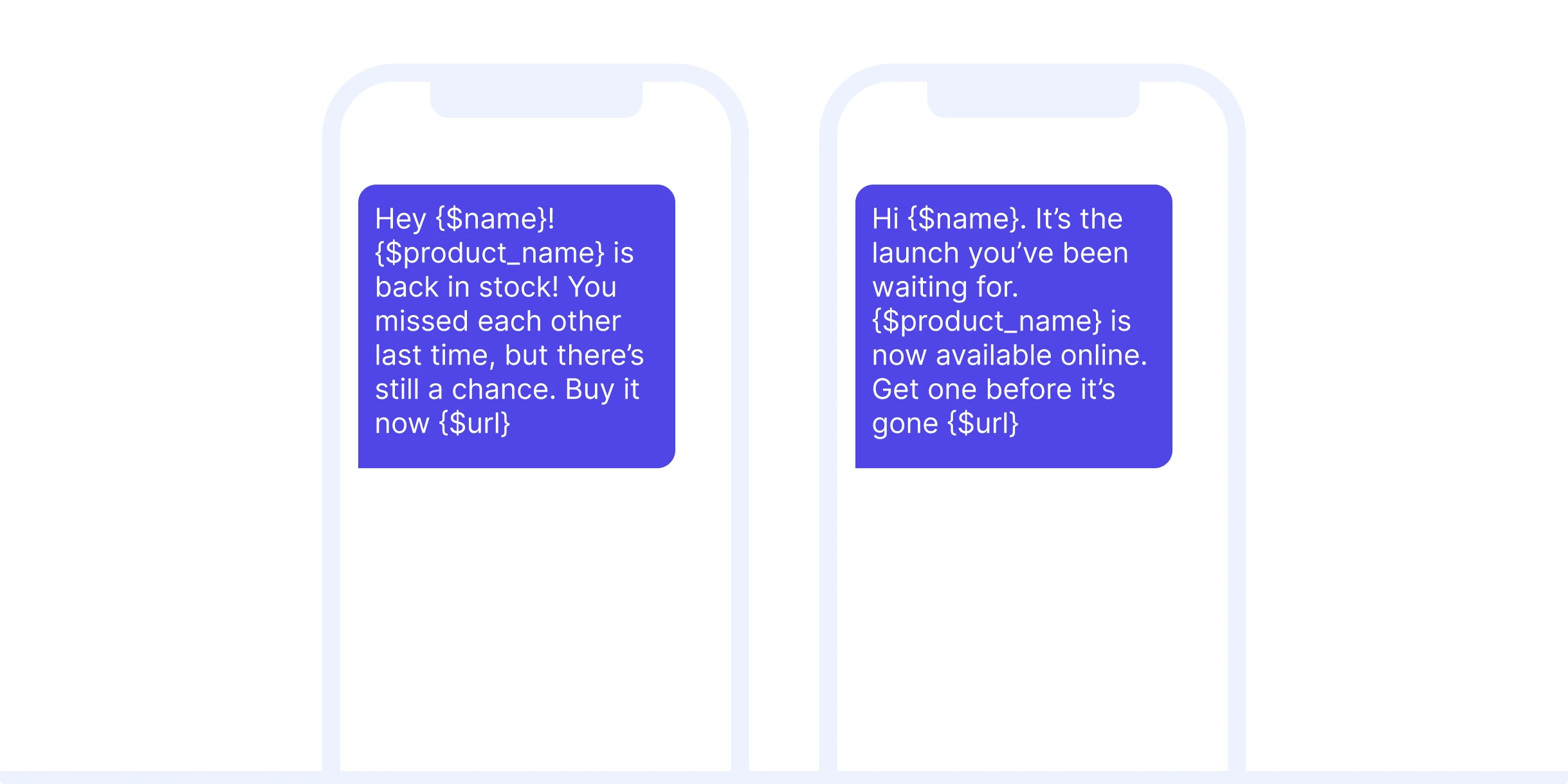
Feedback requests and surveys
Gathering feedback about your product and service is essential to increasing customer satisfaction and improving your offering. An SMS survey is a quick and easy way for customers to provide feedback, and you can even throw in an incentive such as an entry into a competition or a voucher for their participation.
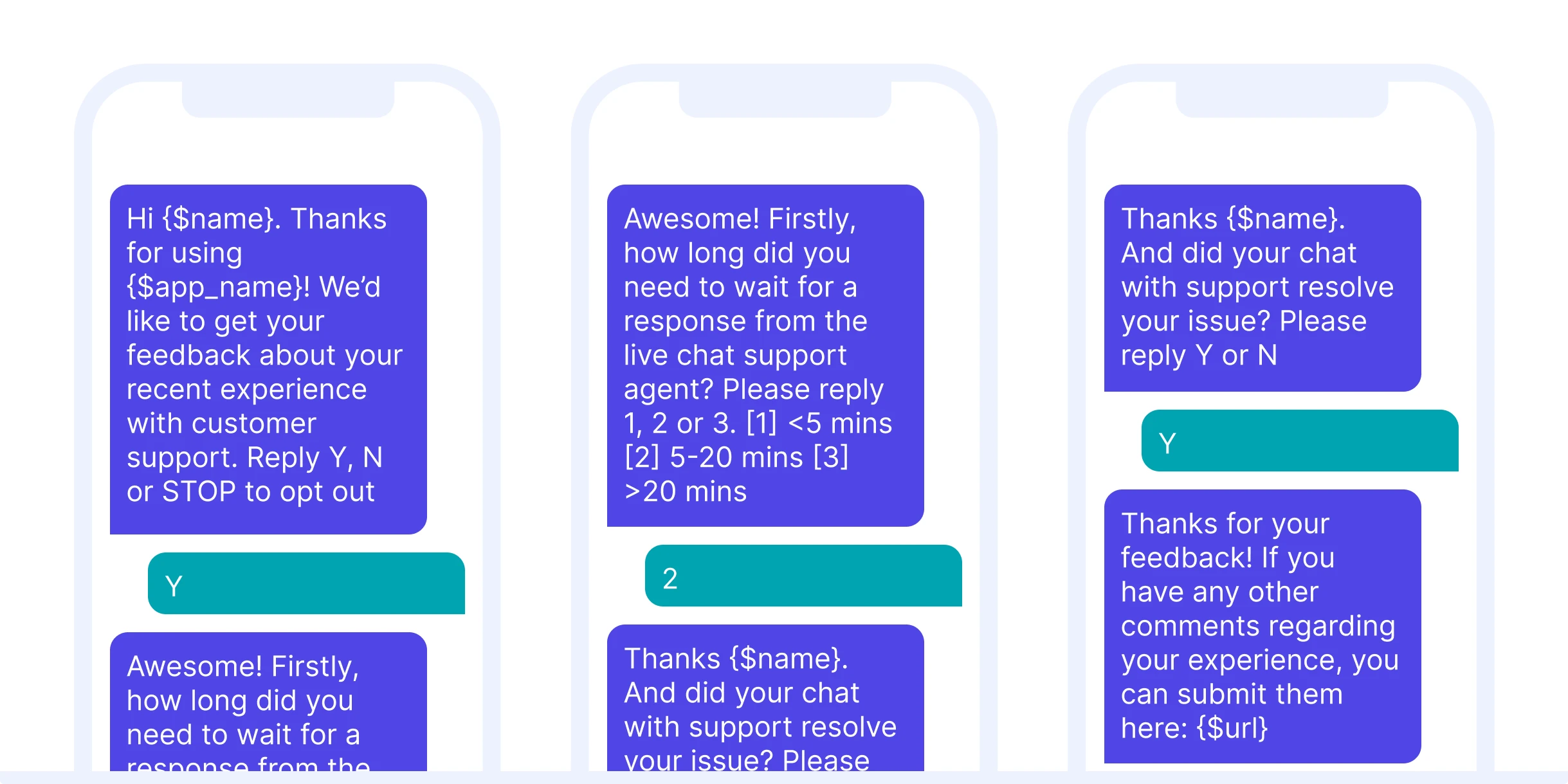
Government and other organizations
General alerts and notices
SMS is great for public sector services and governmental organizations, as it allows you to quickly send important information en masse. In addition to keeping people informed about government services, SMS is an effective way to deliver alerts and notifications about events and other news.
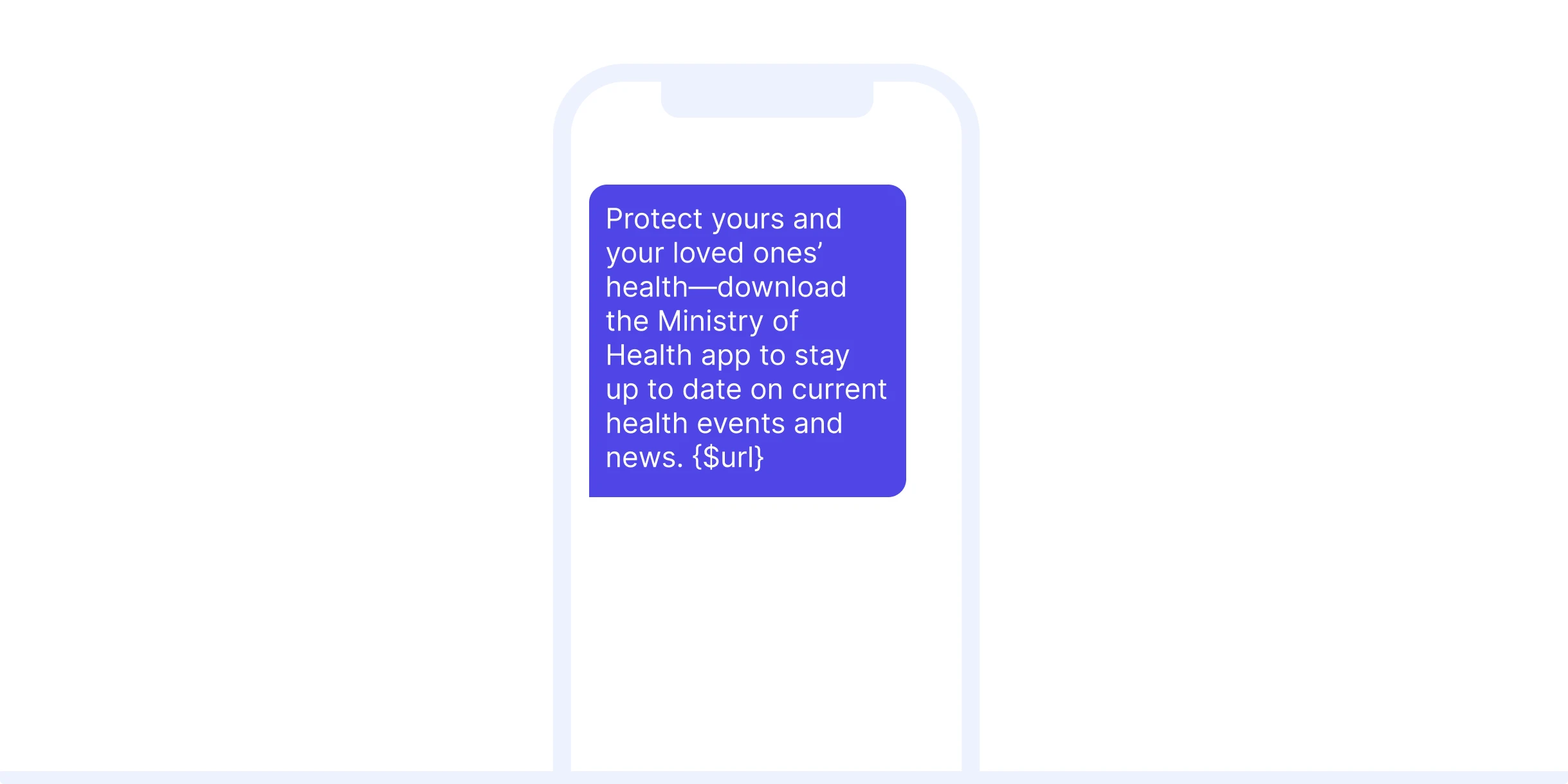
Emergency alerts
During life-threatening events or emergencies, special alerts can be instantly delivered via SMS to protect people from harm and allow them to take the appropriate measures to stay safe. SMS for emergency services allows as many people as possible to be informed as quickly as possible.
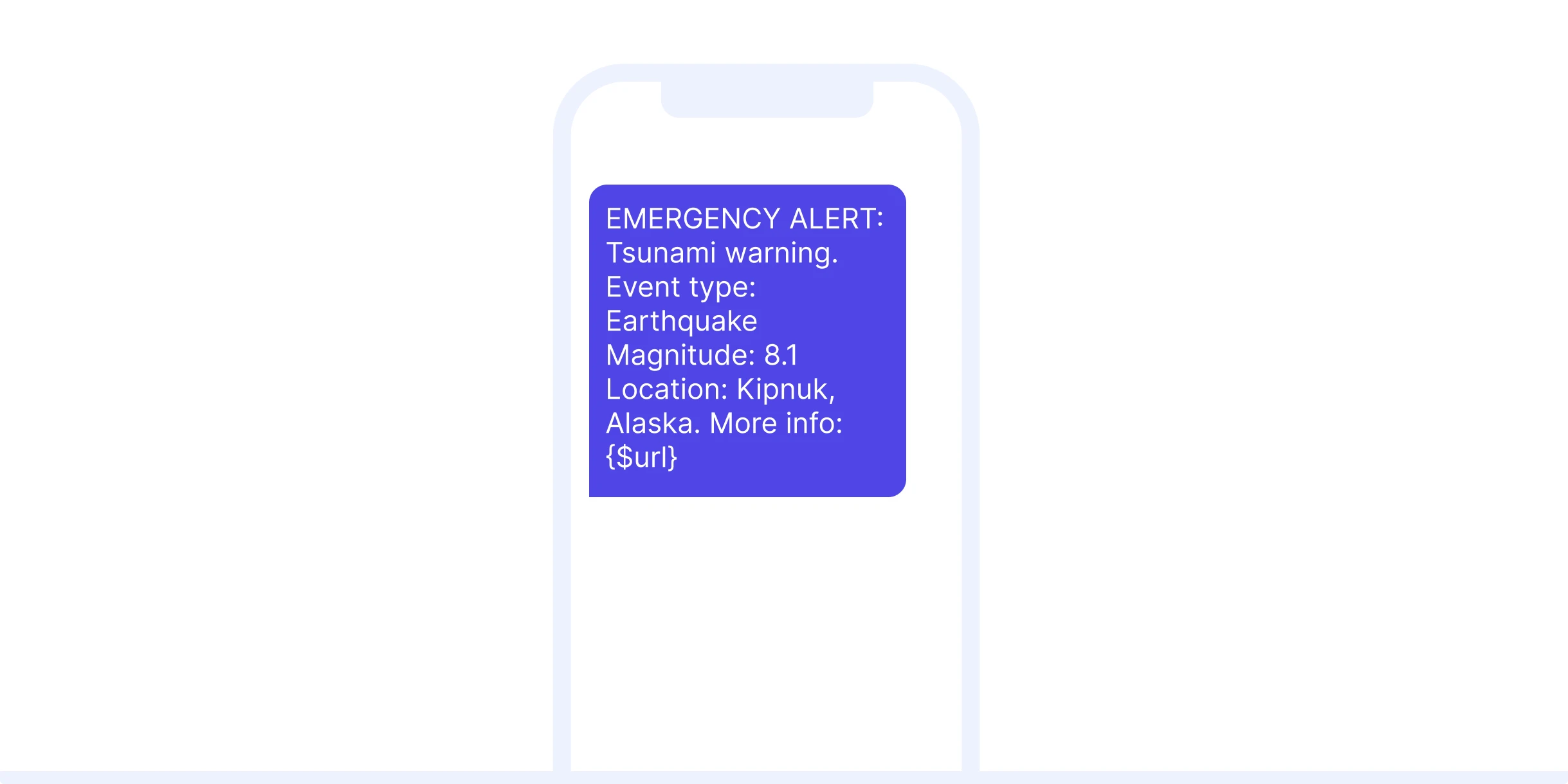
Internal communication
To run a business smoothly, internal communication is just as important as customer communication. While email and instant messaging work well when sitting at the desk, you can also utilize SMS to reach employees who are away from a monitor.
You can use SMS for:
People updates
People updates let employees know when a new colleague joins the team or when one leaves. You can even give updates on promotions and department changes.
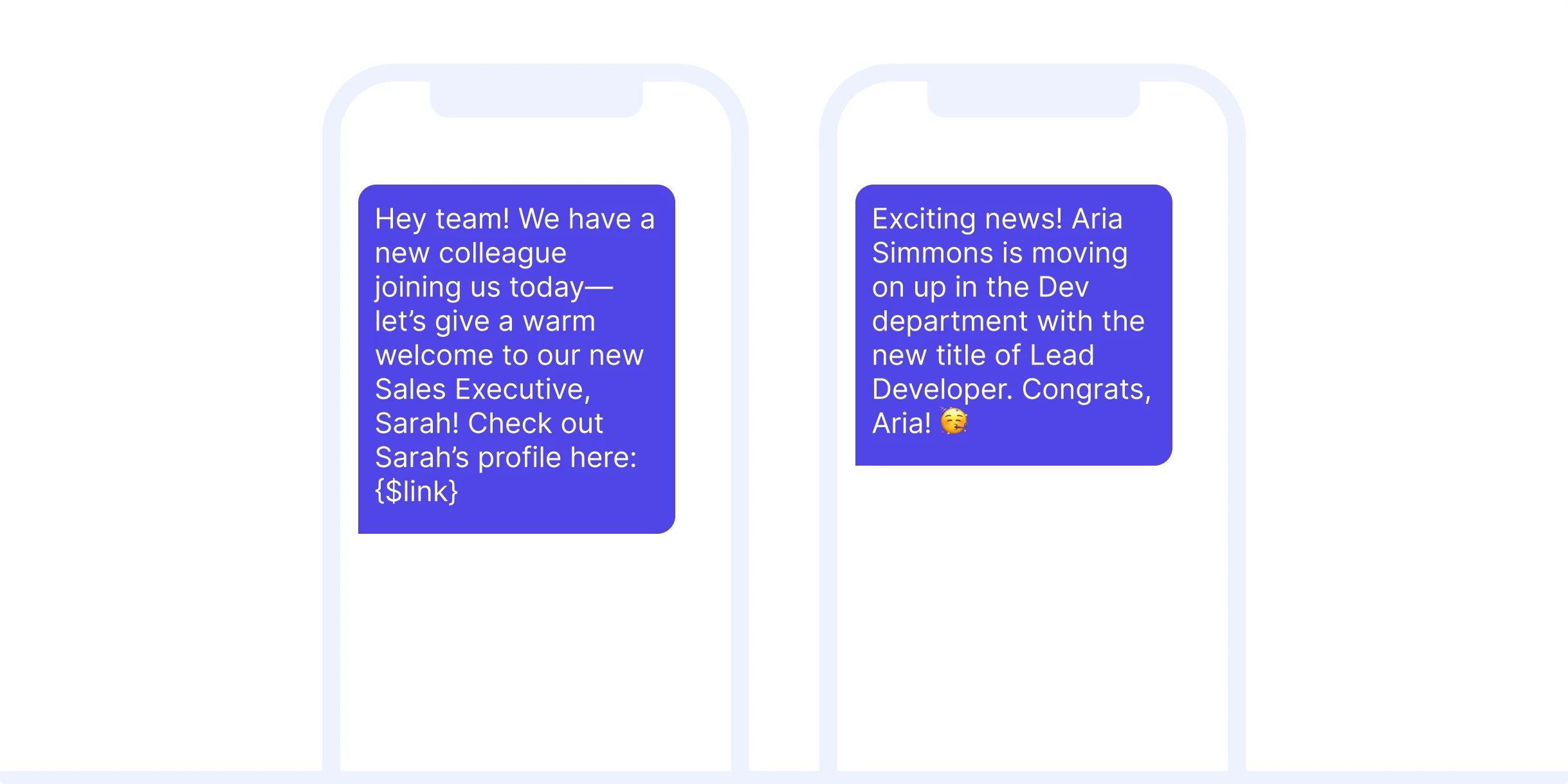
Notifications for shift changes
While shift assignments are usually posted on a work shift planner, you can quickly inform all employees in one mass message that shifts have changed and they should check their itinerary.
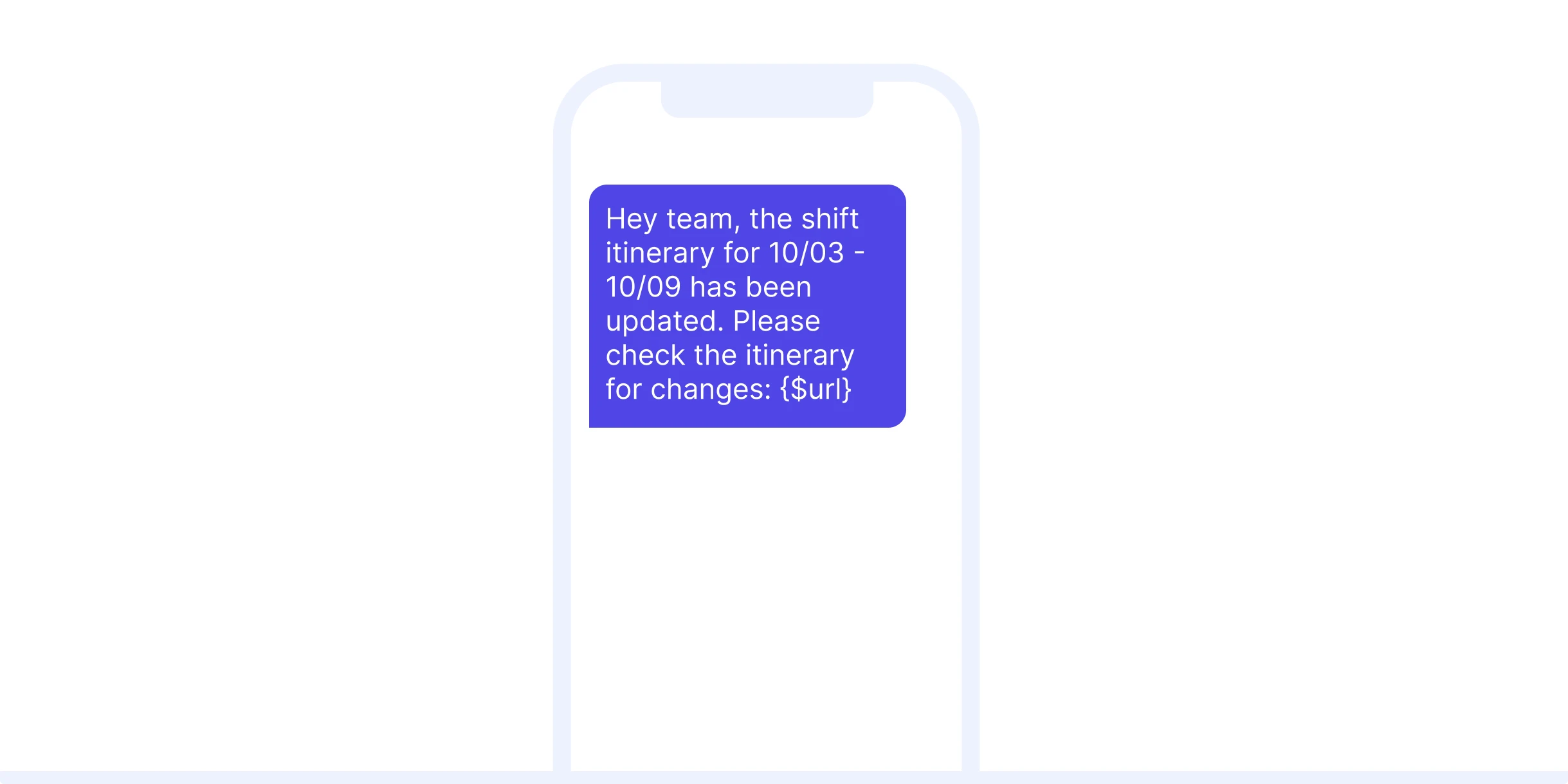
Notifications for birthdays and work anniversaries
To keep employee morale high and build an enjoyable work culture, it’s nice to celebrate personal events and milestones such as birthdays and work anniversaries. You can easily do this via text message.

Share your company newsletter
When we’re busy working, we sometimes overlook company newsletters in favor of other tasks. By sharing your newsletter via SMS, employees are more likely to open it when they have a moment away from work or come back to it later.
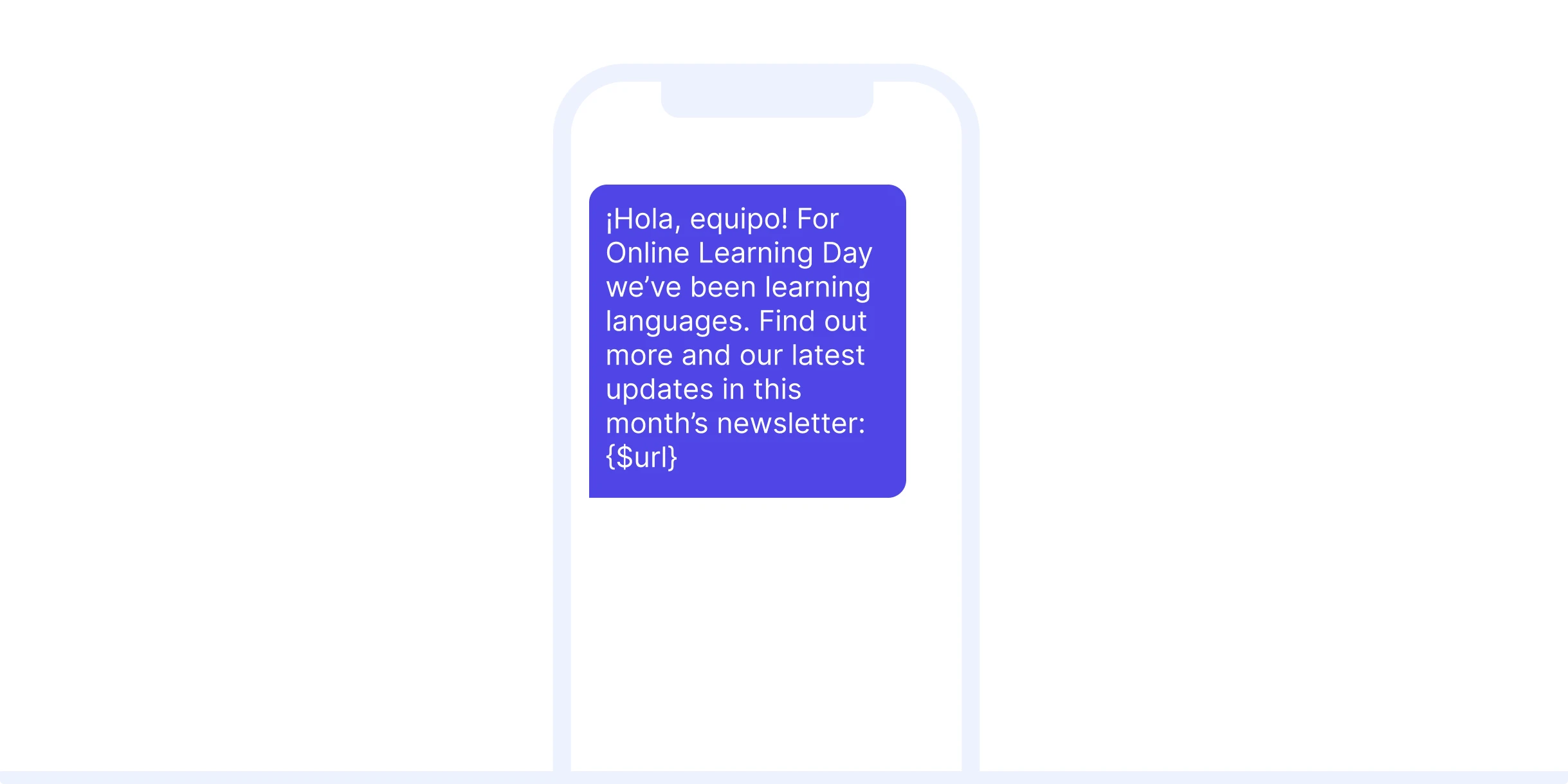
SMS autoresponders
Autoresponders, or Text for Info services, enable you to provide an automated information service to customers. It works by allowing customers to text a keyword to a number to request and receive information. Here are a few ways that businesses can use SMS autoresponders.
Local businesses: Make business information such as phone numbers and addresses available on request
Restaurants: Allow people to quickly find out about your specials, offers and menus
Banks: Enable account holders to access their account balance
Real estate: Include your number and keyword on property listings to request additional information
Public transport: Provide real-time updates about the location and arrival times of buses
Benefits of using SMS messaging for your business
The benefits of using SMS as a communication tool go far beyond simply reaching more customers. Transactional text messaging:
1. Enjoys high delivery and open rates: SMS has a near 100% delivery rate and 98% average open rate compared with email’s 20-30%.
2. Is very fast: Speed is a top priority for transactional messaging, especially for messages like password reset requests. SMS messages can be sent and received in seconds with the majority of recipients opening the message in the first 5 minutes.
3. Isn’t internet-dependent: No 5G? No problem. Recipients can still receive messages with no internet connection, making it a reliable way to deliver important updates.
4. Provides channel ownership: Just like with your email list, you own your SMS opt-in recipients, and have complete control over your messaging and platform. There are none of the risks associated with 3rd party communication tools like social media.
5. Improves business efficiency and customer experience: With high delivery and open rates, more customers will read more of your important messages. This can help, for example, with improving the number of late or missed appointments or ensuring your customer is at home to receive a delivery.
6. Integrates with your favorite apps and CMS: Transactional SMS solutions like MailerSend offer integrations with other apps to send SMS combined with email triggers for a fully automated, seamless experience. You can integrate MailerSend with thousands of apps using Zapier.
7. Is easy for customers to opt-in: Simply include a clear and easy-to-understand opt-in checkbox in the sign-up process or in their account profile.
Transactional SMS best practices & compliance
Text messaging is a simple and convenient way to communicate with customers, and there are tons of ways you can use it to provide a better customer experience! But, there are a number of best practices you should follow to ensure your strategy hits that sweet spot.
You must get consent
To send transactional SMS to your customers, you must receive express consent. This is usually done when the user signs up on your website, sends a text, or if a customer provides verbal consent in person when making a purchase or signing up for a service. Check out the Cellular Telecommunications Industry Association’s (CTIA) guidelines for SMS consent.
Provide clear instructions on how to opt out
You must let your recipients know that they can opt out of receiving SMS messages at any time, and provide instructions on how to do it. This would usually look something like this: Reply STOP to unsubscribe. According to the CTIA, you should also provide multiple methods of opting out, including by phone and email.
With MailerSend, you can automatically add SMS opt-out instructions by going to SMS, Phone numbers and then clicking Manage next to the number. Scroll to the Settings section and toggle Unsubscribe Instructions on. Click on Manage Unsubscribe Text to edit your message.
Keep your transactional messages informational
Unless your recipient has given express written consent to receive SMS messages for marketing purposes, you should stick to sending only informational texts.
Use a professional transactional SMS service
SMS is a highly regulated industry that requires numerous checks and verifications to send messages on a mass scale. A transactional SMS service like MailerSend is built to handle sending SMS quickly and at scale, and follows the relevant standards and regulations.
Stay short and sweet
The character limit for a single SMS message is 160 characters. While longer messages will be split into multiple texts, it’s best to keep your messages as succinct as possible. If you need to include additional information, consider sending it in a URL.
Use personalization
The more personalized your SMS messages are for recipients, the more value they’ll provide. Use personalization variables in your message templates to include information such as the recipient’s name, order details, appointment information, and more.
Learn more about SMS compliance in our complete guide.
How to send SMS messages with MailerSend
With MailerSend, you can start sending and receiving transactional SMS in minutes with the powerful SMS API, comprehensive documentation and regularly updated SDKS. Customer text messaging is included in our Starter, Professional, and Enterprise plans—check out the plans and pricing.
A trial phone number is provided to all eligible accounts. Once you’re ready to start sending text messages to your customers, you can purchase a phone number from the Add-ons section on your Plan and billing page.
1. Create an SMS API token by going to Settings then selecting the API tokens tab and clicking Generate new token.

Make sure it has the SMS permission toggled to Full access, so you have reading and writing access. You can also use an existing API token with full access.
For more information on how to create and manage API tokens, visit our API token management guide.
2. Make a POST request to https://api.mailersend.com/v1/sms with the following:
{
"from": "+18332647501",
"to": [
" +16203221059"
],
"text": "This is just a friendly hello from your friends at MailerSend."
}You can then check the status of the message under the SMS Activity page.
Check out these guides to learn more:
Customers love SMS, you should too!
If your business has a strong focus on communication and wants to enrich the customer experience, transactional SMS is the ultimate tool to supercharge these efforts! When done right and following SMS best practices, SMS offers convenience, efficiency, higher customer satisfaction, and stronger relationships.
Have you tried communicating with your customers via SMS? Which types of messages work well for your business? We'd love to hear about your experience in the comments below.
Start sending SMS today
MailerSend combines email and SMS for a holistic and seamless brand experience. Sign up for free today and get 500 emails per month.



